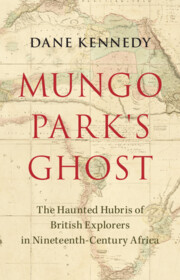116 results
Chapter 3 - The Expert Transition Cycle
- from Part I - Transitions
-
- Book:
- Transition Expertise and Identity
- Published online:
- 30 May 2024
- Print publication:
- 06 June 2024, pp 23-36
-
- Chapter
- Export citation
1 - Aristeas of Prokonnesos
- from Part I - Archaic Period
-
- Book:
- Geographers of the Ancient Greek World
- Published online:
- 25 March 2024
- Print publication:
- 18 April 2024, pp 109-119
-
- Chapter
- Export citation
2 - Skylax of Karyanda
- from Part I - Archaic Period
-
- Book:
- Geographers of the Ancient Greek World
- Published online:
- 25 March 2024
- Print publication:
- 18 April 2024, pp 120-126
-
- Chapter
- Export citation
8 - Pytheas of Massalia
- from Part II - Classical Period
-
- Book:
- Geographers of the Ancient Greek World
- Published online:
- 25 March 2024
- Print publication:
- 18 April 2024, pp 231-246
-
- Chapter
- Export citation
4 - Hanno of Carthage
- from Part II - Classical Period
-
- Book:
- Geographers of the Ancient Greek World
- Published online:
- 25 March 2024
- Print publication:
- 18 April 2024, pp 149-156
-
- Chapter
- Export citation
3 - Business as Usual
-
- Book:
- Regenerative Strategies
- Published online:
- 28 March 2024
- Print publication:
- 04 April 2024, pp 43-77
-
- Chapter
- Export citation
Nourishing food, clean air and exercise: medical debates over environment and polar hygiene on Robert Falcon Scott’s British National Antarctic expedition, 1901–1904
-
- Journal:
- Medical History , First View
- Published online by Cambridge University Press:
- 18 March 2024, pp. 1-17
-
- Article
-
- You have access
- Open access
- HTML
- Export citation
3 - Colonizing Oceania
-
- Book:
- Regional Politics in Oceania
- Published online:
- 15 February 2024
- Print publication:
- 22 February 2024, pp 57-86
-
- Chapter
- Export citation
10 - Mapping and Related Tasks
- from Part two - Representation and Planning
-
- Book:
- Computational Principles of Mobile Robotics
- Published online:
- 19 March 2024
- Print publication:
- 08 February 2024, pp 278-298
-
- Chapter
- Export citation
7 - Eating the Country
-
- Book:
- Mungo Park's Ghost
- Published online:
- 24 December 2023
- Print publication:
- 25 January 2024, pp 157-182
-
- Chapter
- Export citation
Introduction
-
- Book:
- Mungo Park's Ghost
- Published online:
- 24 December 2023
- Print publication:
- 25 January 2024, pp 1-9
-
- Chapter
- Export citation
Chapter 6 - Inquiry science for young children
- from Part 2 - How can I enhance children’s learning of science?
-
-
- Book:
- Science in Early Childhood
- Published online:
- 13 December 2023
- Print publication:
- 10 January 2024, pp 89-103
-
- Chapter
- Export citation

Mungo Park's Ghost
- The Haunted Hubris of British Explorers in Nineteenth-Century Africa
-
- Published online:
- 24 December 2023
- Print publication:
- 25 January 2024
Chapter 10 - Compasses
- from Part II - Developments
-
-
- Book:
- Technology and Literature
- Published online:
- 30 November 2023
- Print publication:
- 14 December 2023, pp 199-215
-
- Chapter
- Export citation
Chapter 3 - Creativity
- from Part I - Cognition
-
- Book:
- Encouraging Innovation
- Published online:
- 17 August 2023
- Print publication:
- 31 August 2023, pp 27-40
-
- Chapter
- Export citation
9 - Managing Stress and Supporting Growth
- from Part III - Relationship Maintenance
-
- Book:
- The Science of Romantic Relationships
- Published online:
- 17 August 2023
- Print publication:
- 31 August 2023, pp 308-342
-
- Chapter
- Export citation
Chapter 3 - Against the Day
-
- Book:
- Planetary Pynchon
- Published online:
- 24 August 2023
- Print publication:
- 24 August 2023, pp 59-93
-
- Chapter
- Export citation
A shared novelty-seeking basis for creativity and curiosity
-
- Journal:
- Behavioral and Brain Sciences / Volume 47 / 2024
- Published online by Cambridge University Press:
- 07 August 2023, e89
-
- Article
- Export citation
12 - The Arctic Sublime
- from Part II - Romantic Sublimes
-
-
- Book:
- The Cambridge Companion to the Romantic Sublime
- Published online:
- 06 July 2023
- Print publication:
- 20 July 2023, pp 154-165
-
- Chapter
- Export citation
3 - Beyond the Horizon
-
- Book:
- The Vanished Settlers of Greenland
- Published online:
- 01 June 2023
- Print publication:
- 06 July 2023, pp 103-141
-
- Chapter
- Export citation



